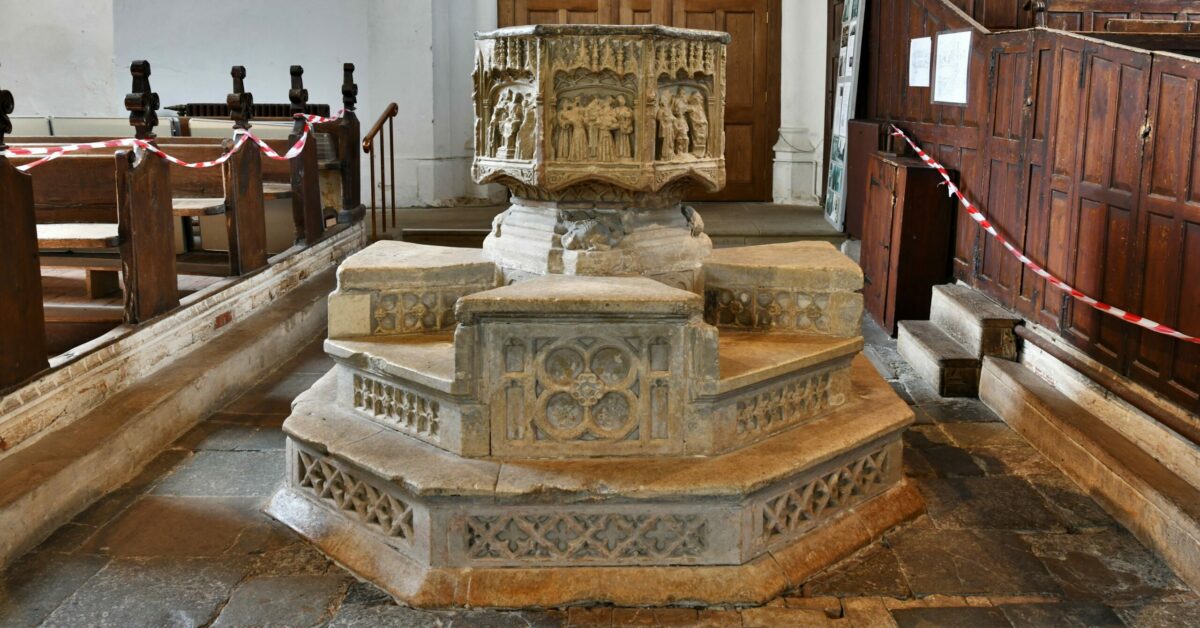A Theology of Christian Initiation
We move on to chapter 4 in A Pastoral and Theological Commentary on the Order of Christian Initiation of Adults titled “A Theology of Christian Initiation” by Dr. Kimberly Hope Belcher (who is on the faculty at Notre Dame). Belcher introduces this chapter by noting that in the ancient world, where participation “convey[ed] a share in the reality one participated in” meant “that by participation in Christian initiation, the Christian has come to be another Christ.” Such a theological claim is more difficult in our current context, where many people, by equating “real” with “physical,” miss the import “of the symbolic nature of the sacraments” (43-44). Belcher claims that theologians speak of this symbolic nature
… because they [the sacraments] address human beings, who come to know by symbols truths that cannot be empirically proved or stated as a proposition. The liturgical symbols express mysteries: our deepest loves, hopes, and commitments. They change us because they speak to a human level that is deeper than the material world (44).
She offers five themes expressed through the Christian initiation, giving greatest weight and attention to the first, the paschal mystery. Like Luther’s baptismal theology, this concept is anchored in Roman 6, “the symbolic act of death in baptism” through which the initiate is joined with Christ’s death and resurrection; his death “is the revelation of the eternal love of God for creation and also the source of the forgiveness of sins” (44). The implication of this joining is true freedom. Belcher writes that “Christians after baptism have been liberated from worldly values, preparing for the death they have already begun to experience” (47).
The remaining themes flow from this first. The Trinity (second theme) is revealed through the person of Jesus, whose passion, death, and resurrection “is a manifestation of an endless cycle of self-giving and selfless love that is characteristic of the Trinity” (48). The moral life (fourth theme) has a trinitarian framework informed by the initiation rituals, which reveals the love the Father, joins one to Christ, and in which the Christian life, expressed in love of neighbor, is supported by the Holy Spirit (52). Of eschatology and cosmology, the final theme, she writes: “The blessing of the baptismal water points toward the heavenly consummation … The catechumenal journey should be celebrated within a community that undertakes to be a foretaste of that heavenly life, despite their human frailties” (53).
I close with her third theme, ecclesiology, to which she gives significant attention regarding those enrolled in OCIA who “have been validly baptized.” Yes, participating in the OCIA process for these baptized people is “initiation into full communion with the Catholic Church,” but she stresses that through baptism a person enters into “the universal Christian church, which is fragmented into various communities not in communion with one another” (50). She continues, “The OCIA balances two complementary theological principles: respect and pastoral care for the person who presents herself or himself for inquiry, and respect for our ecumenical partners, other churches or ecclesial communities who believe in the Trinity and baptize.” To keep that balance “candidates’ baptism in and formation by other churches or ecclesial communions deserves honor from the Catholic communities where they are finding a new home” (51). This language not only resonates with me, as a member of an “ecclesial community,” but it also reflects the sacramental theology with which she began: “The liturgical symbols express mysteries: our deepest loves, hopes, and commitments. They change us because they speak to a human level that is deeper than the material world” (44). But most of all, her sacramental theology comes close my own; to her words “that by participation in Christian initiation, the Christian has come to be another Christ” (43), I would add these: that in baptism one is joined to Christ and, by daily dying to sin, “it is no longer I who live, but Christ who lives in me” (Galatians 2:20).
+++++
Banner photo
Laxfield, UK; All Saints Church: 15th-century Seven Sacraments font. Photograph by Michael Garlick
© Copyright Michael Garlick and licensed for reuse under this Creative Commons Licence.
https://commons.wikimedia.org/wiki/File:Laxfield,_All_Saints_Church,_c15th_Seven_Sacraments_font_-_geograph.org.uk_-_6554421.jpg
